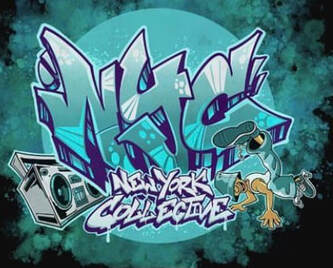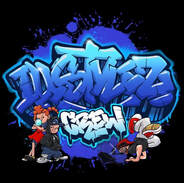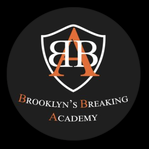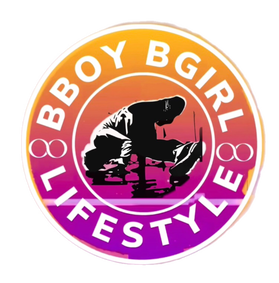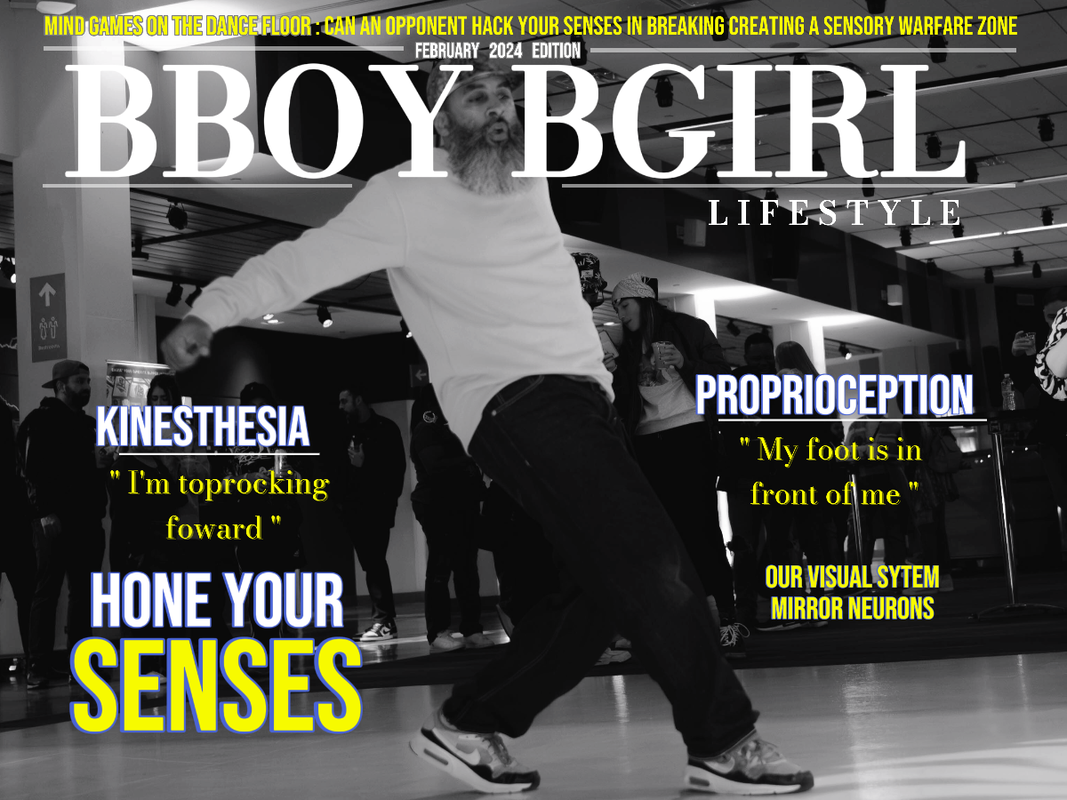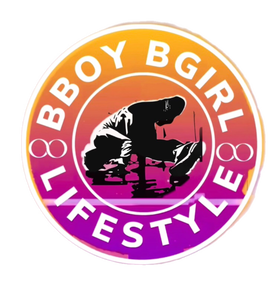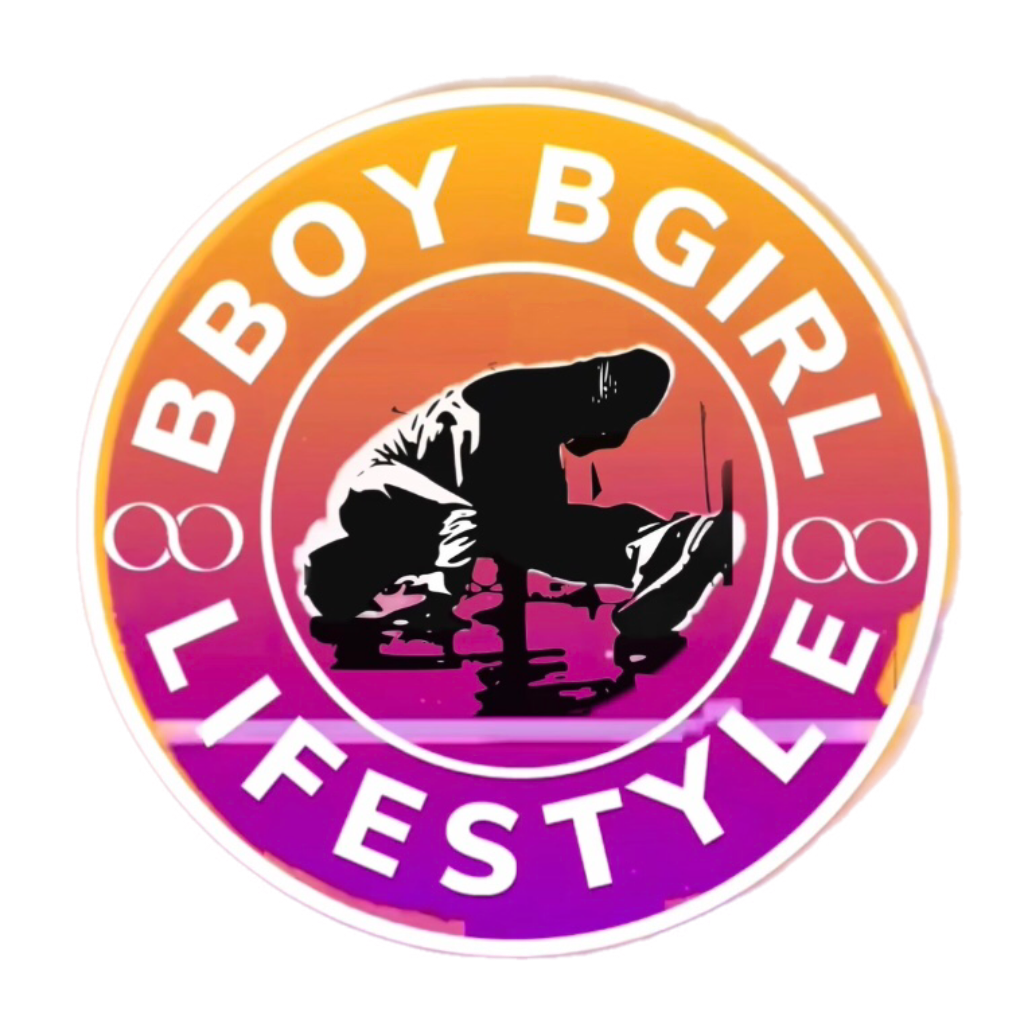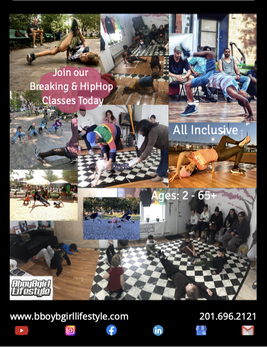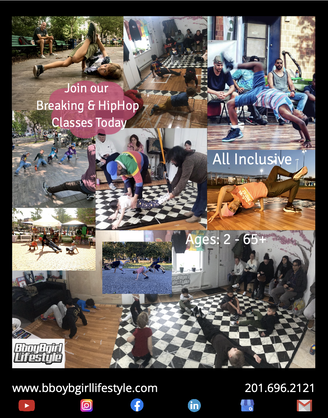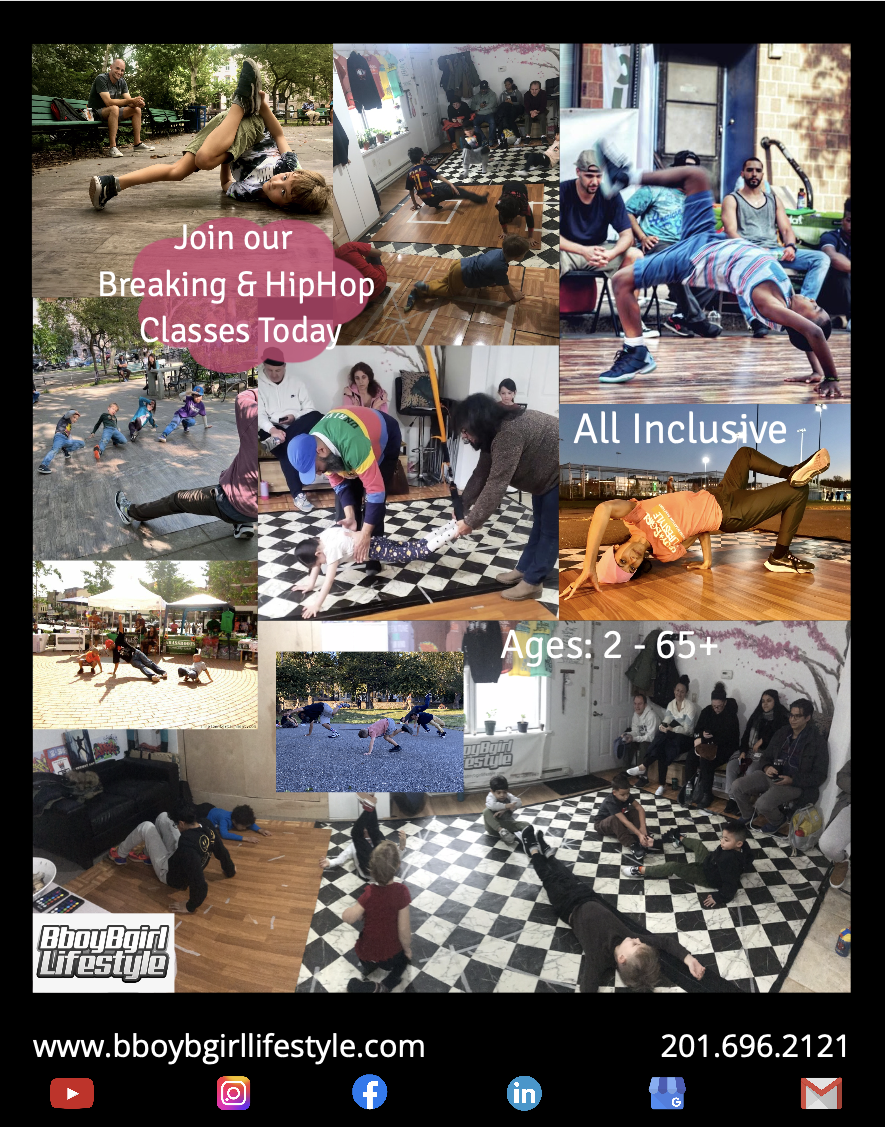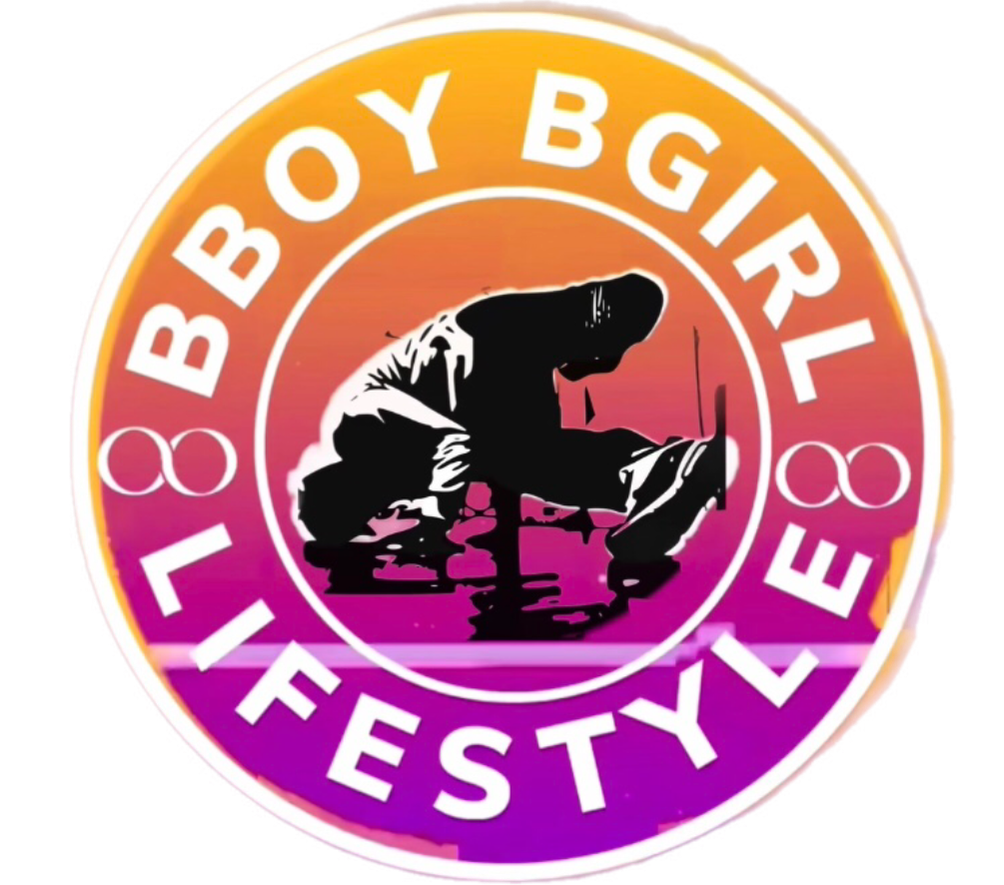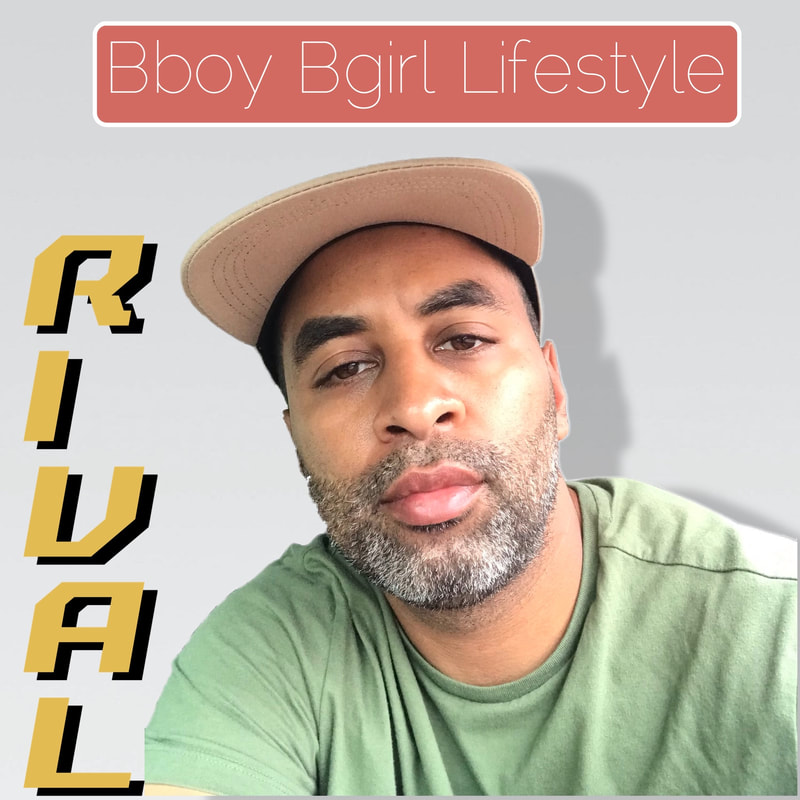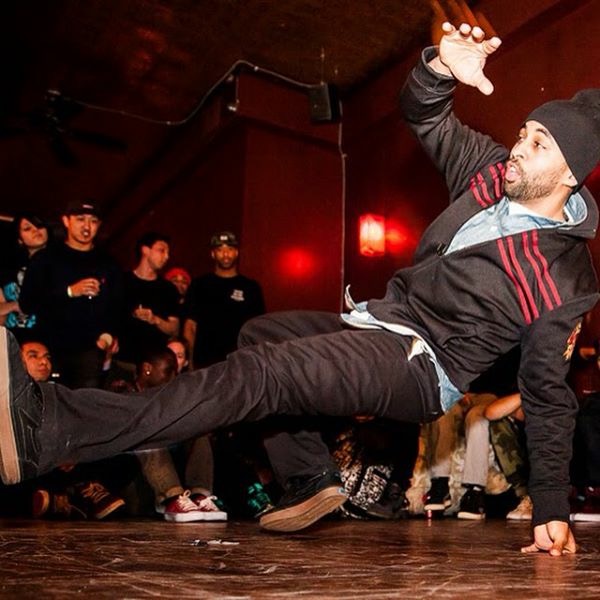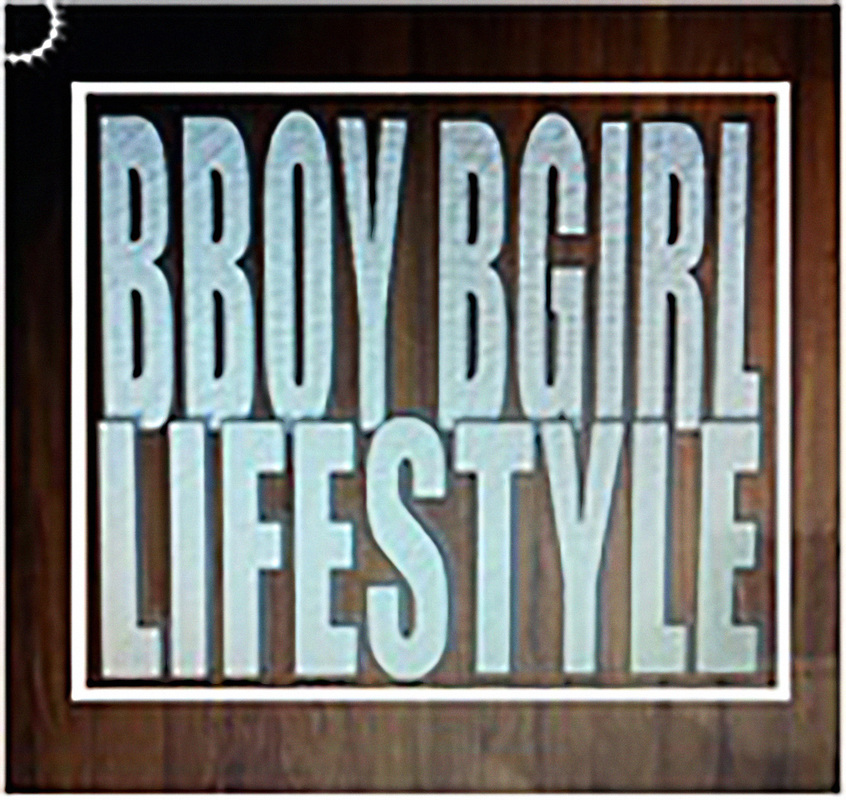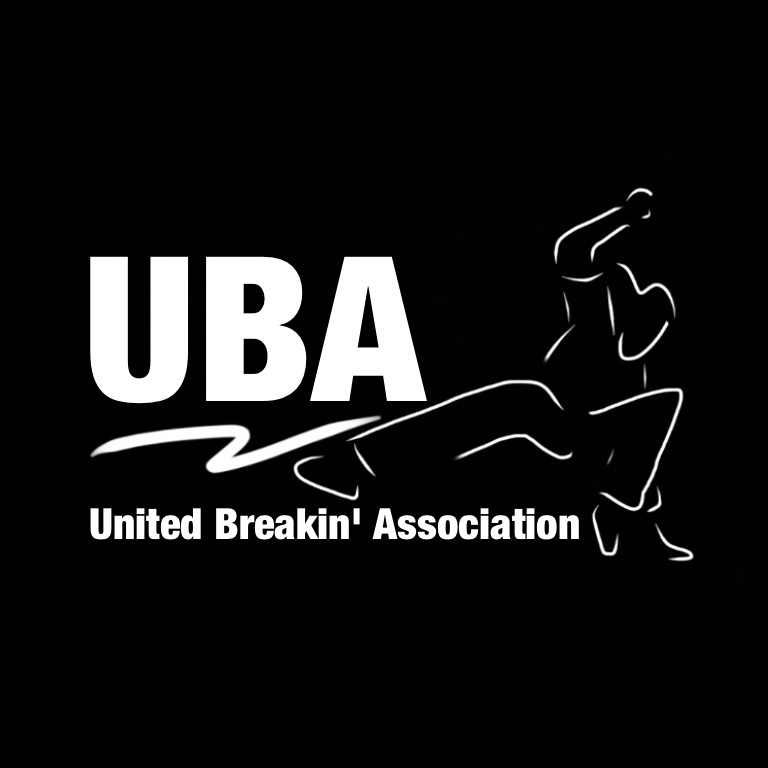The Physics Behind Breaking: Insights from Inverse Reporter Elana Spivack on Olympic Debut7/19/2024 Exploring the Science and Culture of Breaking as it Takes Center Stage at the 2024 Paris Olympics
The Initial Connection
Elana reached out to us with a clear goal: to explore the physics behind breaking moves. As a passionate advocate of breaking culture, I was thrilled to connect and share my knowledge.
"I'm Elana, a reporter in New York for science and culture site Inverse. I'm writing about the physics behind different breaking moves, and I'm hoping to connect with a coach to navigate the world of breaking." - Elana Spivack
My response was enthusiastic, recognizing the opportunity to bridge the gap between the physicality of breaking and the scientific principles at play.
"I have extensive experience as a breaker and coach, and I'm passionate about both the culture and the physicality of the art form. I can definitely help you navigate the world of breaking and provide insights on the physics behind different moves." - Henry "Rival" Vijande The Video Chat and Key Insights
We scheduled a video chat where we could dive deeper into the physics of breaking. Elana was particularly interested in focusing on 3-5 power moves and understanding the physical principles behind each.
During our conversation, we explored iconic power moves such as the Windmill, 1990s, Headspin, Jackhammer, and Airflare. Elana's approach was thorough, as she planned to get a physicist's perspective on these moves. "I then showed 5 of the power moves we talked about to a physicist to get the technical, scientific point of view." - Elana Spivack A Deeper Dive into Breaking
Elana's curiosity about breaking was infectious. Here are some of her reflections and what she found most interesting:
"I knew I wanted to cover breaking for the Olympics because it's making its debut. I think it's an incredible sport, and I wanted to be one of the first journalists to cover it from a scientific point of view early on." - Elana Spivack
Her interest wasn't just about the moves but also about the culture and community aspect of breaking.
"There's a self-taught element but also a community aspect. It doesn't seem like there's a lot of gatekeeping within breaking -- everyone is willing to help each other and share skills." - Elana Spivack Ranking the Power MovesLet Us Know
your thoughts ?
Elana's follow-up question was about ranking the difficulty of the power moves from least to most difficult. Here's a general progression for most bboys and bgirls:
Breaking at the Olympics
Breaking is set to make its debut at the Paris 2024 Olympics on August 9th and August 10th. This historic moment will showcase breaking to a global audience, emphasizing both its artistic and athletic aspects. For more details on the schedule and events, you can visit the official Paris 2024 Breaking Schedule.
Clarification
In our discussion, Elana mentioned my involvement in campaigning for breaking to be included in the X Games. To clarify, when I was 17 years old, I discussed with a mentor why breaking was not included in the X Games despite its popularity. Many years later, I, along with a group of other individuals in our community, connected, organized, and worked in tandem to get breaking, also known as breakdancing, included in the 2018 Youth Olympics and eventually the Olympics.
Conclusion
Our conversation was not just about breaking moves but also about the cultural and scientific richness of breaking. Elana's insights and enthusiasm have inspired us to look deeper into the physics behind our art form.
"Understanding the physics helps me appreciate why breaking works the way it does because someone is working within the limits of what's physically possible." - Elana Spivack
We look forward to reading Elana's article and seeing how she weaves the scientific and cultural narratives of breaking. Her exploration into the physics of breaking is a testament to the complexity and beauty of our craft.
Thank you, Elana, for the engaging conversation and for highlighting the incredible intersection of science and art in breaking. You can follow Elana's work on Inverse and visit her personal website here.
(Banner Image from Inverse.com)
Read Now FULL Article on Inverse.com*For Full Questions and Responses:
What initially drew you to Breaking and the research you’re doing?
"I knew I wanted to cover breaking for the Olympics because it's making its debut. I think it's an incredible sport, and I wanted to be one of the first journalists to cover it from a scientific point of view early on. So many Olympic sports also seem to have a history of elitism, while breaking seems to have a history of being for anyone who can and wants to do it, which I think sets it apart. There's a self-taught element but also a community aspect. It doesn't seem like there's a lot of gatekeeping within breaking -- everyone is willing to help each other and share skills, based on how many tutorials and schools there are. Physics is also one of my favorite kinds of science because it explains everything we see in the world around us. Even if most people don't go about understanding breaking through physics, I think it's still cool to know why it works the way it does. There are common threads underpinning all the moves -- angular velocity, acceleration, momentum, center of mass, moment of inertia -- that we don't even think about. I think understanding the physics helps me appreciate why breaking works the way it does, because someone is working within the limits of what's physically possible. There's a reason why a body must be positioned a certain way in order to execute a move, there's a scientific answer behind the technique." What aspects of Breaking do you find most interesting? "Aside from it being physically incredible, I love the conversation aspect of it. The two dancers seem to be building off each other's energy in a way that's not always true for other sports. In many other Olympic sports, the athletes are competing against each other; it's about taking and maintaining a lead. With breaking, there's an exchange of capabilities with a call and response. There's still a competition going on, and a judgment of capabilities, but the breakers create a dialogue. One breaker makes a statement with their body, and then the other breaker gets a chance to respond. It's not just about one-upping each other, it's also about taking what one person puts down and making your own spin on it. I also find clothes and style really interesting. Style in breaking is personal, but also functional. The clothes you wear will help reduce friction and gain speed. I love seeing how each b-boy and b-girl expresses their unique style, which is arguably as important as the moves themselves, while using clothes to their physical advantage." What did you enjoy about our conversation about iconic power moves? "I enjoyed hearing your self-described purist point of view. For example, I asked you about which surface was best for breaking, and you said that each surface is good in its own way. You seemed to accept that every scenario has its advantages and disadvantages. I also liked hearing about how fluid these power moves are -- they all seem to be able to transition into each other. It highlights the possibilities and many variations within breaking. There's not just one way to do anything. I also appreciated that you asked if I've ever done a power move; you helped me realize that I have!" What did you learn through our discussion? "I learned that there are so many familiar motions that count as breaking. While breaking can look extremely complex and difficult, it all starts with simple moves. A somersault or cartwheel or handstand are all moves that breaking uses, and they're also moves that many of us learn how to do in childhood. You said a kid might say, 'Let me go on my back and push myself and, and spin. And oftentimes, they initially start spinning on their butt first, and then figure out how to transition to their back.' A kid might just be playing around by spinning on their butt at first, but that's the first step to breaking. It made me realize that I know more about breaking than I thought I did, that I have the ingredients to start putting together moves. But then it takes trial and error to see what feels right, and to figure out a proper technique to minimize friction and build momentum. But that all starts with playing around. I also learned that learning breaking is quite intuitive. You emphasized that learning a move comes from someone's understanding of their own body. It seems like learning is highly individual to everyone. You also talked about the larger network you are part of in breaking. You talked about how you campaigned for breaking to be at the X Games by connecting and organizing with other passionate breakers. It seems like the breaking community has so much strength in numbers and passion."
0 Comments
why we the dancers do what we do
*Make sure to press Play on Soundcloud player for Music treat!
Breakdancing, also known as breaking, rocking , getting down, go off or b-boying / b-girling isn't just a collection of impressive moves. It's a vibrant culture built on community, respect, and a shared passion for expression. And at the heart of this culture lies what we call in Hip Hop, the Cypher. A Cypher is a circular formation of people--in this case dancers-- where the magic truly happens.
" The concept of the cypher was introduced by an Islamic-based organization, the Five Percent Nation, also known as the Nation of Gods and Earth, which was an offshoot of the Nation of Islam and formed in Harlem during the mid-1960s. - The Dallas Observer Five Percent Nation For the novice stepping into their first breaking class, the cypher might seem intimidating. But for seasoned B-girls and B-boys, it's a sacred space pulsating with energy, history, and the raw essence of breaking. This blog dives deep into the significance of the cypher, exploring not just what it is, but what it represents for the breaking community
Breaking Down the Walls: Community and Unity in the Circle
Imagine a vibrant group of people, pulsating with the beat of hip-hop. In the center, a circle forms, not to exclude, but to welcome. This circle is the cypher, and within its boundaries, all are equal. For B-girls and B-boys, the cypher transcends age, race, and skill level. It's a space where passion for breaking unites individuals, fostering a strong sense of community. Whether you're a beginner mastering your first windmill or a seasoned veteran dropping jaws with mind-blowing footwork, the cypher welcomes you. Respect the Circle, Respect the Craft: Stepping Up to the Challenge Entering the cypher isn't just about showcasing your moves. It's an act of respect for the space and the dancers already there. It's a silent acknowledgement of their dedication and an unspoken agreement to uphold the spirit of breaking. But the cypher is more than just respect - it's a challenge. It's your chance to step into the spotlight and unleash your creativity. Here, you can push your limits, experiment with new moves, and leave the audience breathless with your skill. It's a nerve-wracking but exhilarating experience that fuels growth and camaraderie
Turning Up the Volume: The Flow and Call and Response of the Cypher
The circular format of the cypher isn't just symbolic. It creates a natural flow for dancers to take turns in the center,showcasing their unique styles. One dancer finishes their throw down, go down, set, routine, the energy builds, and another steps in, seamlessly picking up the rhythm. This creates a beautiful call and response dynamic. The dancers build off each other's energy, their moves feeding into one another, creating an improvised masterpiece that's greater than the sum of its parts. A Legacy in Motion: History and Tradition in the Circle The cypher isn't just a modern phenomenon. It's a cornerstone of breaking's history, dating back to its birth in the New York City streets of the 1970s. The founders of breaking used the cypher as a platform for expression, battling for bragging rights and pushing the boundaries of the dance form. Today, dancing in a cypher connects B-girls and B-boys to this rich legacy. It's a tangible link to the pioneers who paved the way. Every cypher becomes a living testament to breaking's evolution, a space where the past inspires the present and shapes the future.
Video Footage post from Pluto Seven TBB Youtube Page, Style Wars Blu Ray Edition Bboy extra footage. Check out!Style Wars
More Than Moves: The Supportive Energy of the Cypher
While the spotlight shines on the dancers in the center, the true magic of the cypher extends beyond them. Surrounding the circle stands the crew - the B-girls, B-boys, and supporters who form the backbone of the breaking community. Their cheers, claps, and words of encouragement create a symphony of support. The cypher becomes a breeding ground for positive energy, pushing dancers to break their limits and celebrate each other's triumphs. It's a safe space to experiment, fail, and rise again, all with the unwavering support of your breaking family.
Join the Circle, Find Your Voice
The cypher is more than just a dance floor. It's a community center, a battleground, and a historical landmark. It's a space where respect meets challenge, tradition meets innovation, and support fuels growth. So, whether you're a curious newcomer or a seasoned breaker, the cypher welcomes you. Step into the circle, find your voice, and let your body tell your story.
Ready to Break Into the Community?
This blog has just scratched the surface of the cypher's significance. The breaking community is vast and welcoming. Here are some ways to get involved:
Key Take Aways:
Dancing in a circle, also called a cypher, holds a deep significance for Bgirls and Bboys for a few reasons:
New Podcast with Bboy Rise, Flonetik, Rampage
Parents: Yevgeny , Ed Miller Youth Bboys: Shockwave, Juneski, Bboy Fire & Bboy Temok
This interview dives into the world of breaking, also known as bboying and bgirling amongst our peers, through the eyes of participants at a recent event. We hear from dancers, parents, and even a young breaker, all sharing their unique experiences and perspectives on this dynamic dance form.
Key Takeaways:
This interview provides a glimpse into the vibrant world of breaking, showcasing the dedication, passion, and camaraderie that fuels this unique dance culture.
*Bboy Bgirl Lifestyle Transcription
Yo What Up Bboy Bgirl fam! Welcome to the first-ever episode of Bboy Bgirl Lifestyle Live! I'm your host, Bboy Rival, and I'm super excited to be bringing you interviews with some of the dopest Bboys, Bgirls, and members of the breaking community right after fresh events. Today, we're catching all the vibes right after Style On' Em 2. Let's jump right in and hear from the dancers, crews, and parents who make this scene so special! Bboy Rival: All right first question, what’s your bboy name? What crew do you represent? What's the reason that you started breaking ? Bboy Rise: My name is a Bboy RIse. My name represents exactly what I strive for in my training is to keep rising so whenever like things feel tough or down and out. I always look at my name and I’m like , Yo just keep rising and pushing my self either physical mental emotional. What was the other question again? Bboy Rival: What's the reason you started breaking? Bboy Rise: Oh my cousin Form. So like just seeing him get down on concrete, with Timberlands on, at 180 pounds not touching the floor. like you don't hear his feet , with Tims on concrete and 30 degree weather. I was like bro this is it. And I used to play ball I was like na I’m changing my dream bro like , So he inspired me big time. Bboy Rival: Word, Word, OK what's one thing that you like from todays jam? Bboy Rise: Oh man, just Like the community. like the thing that’s most important is seeing the coaches supporting, judges getting all the help from everybody, just coming together, that to me is like everything. Like all of us being together in one place that's all I really care about === Bboy Rival: what is something that you learn? Bboy Rise: Oh give the Mic to people because my I can't speak haha and maybe a little better, crowd control. I think I could have did better with that. Everything else I think we went well. Bboy Rival: All right cool so What’s your Bboy name , What crew do you represent and then what's the reason that you started breaking ? Bboy Flonetik: My name is Bboy Flonetik, I represent Full Circle Soldiers, Hidden gems and Algorythms. My name stands for flow and kinetic energy which translates into my style which has a lot of transitional movements and being able to connect the movements. I start breaking in an after-school program. Working for an after-school program and seeing kids do it inspired me to actually keep going. At First the movements were easy just like a little bit of footwork and then slowly but surely I dive in more into the culture and understand breaking and Hip Hop. === Bboy Rival: word word all right and the second question is what did you like from today? Bboy Flonetik: What I really like from today's event is that there's a lot of people that supported that you know that came battle and supported, you know we all work together and the kids are the future and the fact that we all come together to represent that, so that way there's a future in breaking in or providing that for the community this is what I really see and I like Bboy Rival: Word, and then what's one thing that you learned from today? Bboy Flonetik: I learned from today, how to manage different jobs so I was also , I was coaching my students as well as recording helping out Rise with his event. You know we're all here for each other and you know the last thing I want is for his event to not be successful Because I would want other people to do the same for me and for my event. Bboy Rival: Cool ,cool, any other parents here so I can have their permission? All right so I just wanted to know if I have your permission to interview them and then what's your name what's the reason you want them to participate in breaking? Parent ( Yevgeny) Ohh, good questions. My name is Yevgeny. I originally started because I thought it was worth it , it was gonna be for good for fitness I thought they would be able to do this when we were little. they would be able to do any sport later on because they have domain of their body like I'm all into fitness and everything I have never done breakdancing. I wish if my parents did this for me so but then you know we just weren't exposed to that so I thought if this is something I would get them ready for pretty much anything but they got really into it.
Bboy Rival:
Nice , Nice, Nice, ok cool, is it ok to ask them? what's your names and what crew do you represent and then whats the reason that you started breaking? Bboy Shockwave: My name is a Bboy Shockwave I represent Brooklyn New York Princeton New Jersey and 360 flow Breaking crew. The reason I started breaking because of him, my cousin, Juneski, and I mean like why not, I thought was pretty cool so yeah that's the main reason. Bboy Juneski: My name is Bboy Juneski I represent for 360 Flow . The reason why I start breaking was my father reminded me of it and I thought he saw it in Russia. And I thought was pretty cool it's like to be able to move your body around the floor like spin and do all this good stuff so I thought why not try it and I saw trying I thought and I thought was amazing so I did it . Bboy Rival: Dope dope all right it was one thing that you like from today's event? Bboy Shockwave: The main thing I like is like the energy really motivated me to continue and yeah without the energy I would not have been dancing as well as I have been today. Bboy Rival: And was one thing that you liked today? Bboy Juneski: Great competition the brackets were set up perfectly, age set up and all the competitions were intense and all that Amazing Bboy Rival: Dope, OK what's one thing that you learned ? Bboy Shockwave: I learned that in breaking confidence wins you more battles than pure skill and before before I had this confidence I found it hard to find success and now that I like build some confidence up I’m improving much faster than I was before. Bboy Juneski: I learned to not like team demotivate myself because in the top 8 I I thought I was gonna get completed wrecked but then when I noticed like I 3-0 them I noticed that I should never I should never hold myself back I should always push forward. Bboy Rival: word word thank you, Thank you very much.. Bboy Rival: So the first question is what is your name and then second question is what's the reason you want them ( your children) involved in Breaking? Parent ( Ed Miller ): All right so my name is Ed Miller. Bboy Fire’s dad. And why do I want my kid involved in breaking ? Well he was born dancing and loves to dance but didn't find the right connection until we found Steven and Anthony and the Dynasty crew ( 5 Crew Dynasty) on the track of Astoria Park. Eddie saw it and he lit up. I think like I don't know one or two classes in and this was it for him, this was his thing and it's really, everything's taken a backseat in his brain. This has been what's had him going, It's been a year and a half about. Bboy Rival: Oh Nice! Parent ( Ed Miller ): So you know just watching the, I don’t know just the energy and just the intensity but the enjoyment that he brings when he's breaking. It's been a perfect fit for him. #bboybreaks #bgirlbreaks
Bboy Rival:
Thank you thank you, what's your Bboy name, what crew do you represent, and what's the reason you started breaking? Bboy Rampage: Yeah so my name is Rampage, 5 Crew Dynasty, represent Queens New York, Brooklyn New York, all of New York. Well I started breaking, really is gonna sound funny but to impress girls because I was a teenager and I started to, I got there and I had no rhythm zero rhythm to save my life but I was always athletic enough to do handstands and things like that and then when I found breaking and it was really just a look cool but then as I got into it, I was always athletic right I did sports and things like that but I couldn't really be free when you do sports you know it's just either dribble ball pass and shoot it you throw ball hit the ball whatever and that's kind of the end of it and that's that's dope for people who are really into it but when I found some thing equally or more physically demanding and more athletic plus I can be creative with it that's what really kept me involved in it and then as I went along the way I met my crew and they were all just friends my age We were friends first and crew first and then we just all happen to love the same thing so that also kept me going with the too. Bboy Rival: Word Word OK and last two questions. What’s something that you like from today and the second one is what is something that you learned ? Bboy Rampage: What I liked about today was the energy for all the competitors so like sometimes you go to jams and you see like someone's favorite bboy gets mad love because of their name or what ever they might not even kill it I just got my love for a baby freeze on beat you know what I’m saying but here are all the competitors whether there were killing it or kinda just Vibin out all the kids got a lot of love from the crowd so I really like that. One thing I learned today is that teamwork makes the dream work baby I mean anything a 2 on 2 format or up is it is a crew is a team. so really balancing that energy with your crew mate and who you enter with Is a, is very important and I mean I've kind of always known that cause my crew , 5 Crew we really love doing routines and working together to do bigger routines and things like that but it was kind a revisiting that idea. Bboy Rival: All right if it's OK with you I'd like to ask you what your name is and what's the reason that you started breaking ? Bboy Fire: My name is Bboy Fire and the reason I start breaking is because I didn't like my hip-hop classes because I have a classes were like choreography and I want to be like creative and like not have to do something that someone tells me to do, like be free that's why I started breaking. Bboy Rival: nice nice OK and what something that you like from today's event ? Bboy Fire: Something that I liked was that when we were practicing it wasn't our routines weren’t that good but when we went to the battle it was so good Bboy Rival: Nice, So the way you all made it happen , how it mixed, Nice Nice What is something that you learned? Bboy Fire: I learned that if you believe in yourself you can do something , Bboy Rival: So nice nice nice all right all right powerful, powerful.. IF it alright with you what's your bboy name and what crew do you represent ? Bboy Temok: oh my name is Bboy Temok I represent Dynasty Breaking NYC Bboy Rival: Nice Nice What’s the reason your started breaking? Bboy Temok: I started breaking cause I grew up with the twins Tricks and Jules they've known me since before I was, my mom was pregnant so I’ve known them forever . I’ve seen him break up at parties as a little kid . I heard that they started a school for breaking and I'm like aight ,I let me do it cause I've tried , I did every sport I did basketball soccer swimming track everything and I hated all of it and breaking was just such so so free to me where it had as much instruction as something could give, give me the most freedom that you know like giving me responsibility and having me hold down something. Keeping a structure to it Bboy Rival: Word, OK and what is something that you like from today's event? Bboy Temok: What I liked from today's event it was very competitive but so respectful at the same time between opponents and just the community was all there and it was just really dope ambience and everything. Bboy Rival: Nice and what’s was one thing that you learned? Bboy Temok: Something I learned is that everything comes with hard work at the end it pays off you know you never there just keep pushing to get to the top. Bboy Rival: Nice thank you thank you thank you very much Memorable Quotes:
|
|
**Preserving and Educating the Next Generation!**
As the custodians of this vibrant culture, it's our responsibility to preserve and educate the next generation. We can do this by: * **Supporting breaking programs and workshops.** * **Sharing our knowledge and experience with young dancers and each other** * **Creating opportunities for cyphers and battles.** * **Celebrating the history and values of breaking culture.** By keeping the break alive, we ensure that this powerful art form continues to inspire, empower, and connect generations to come. **So, let the beat drop, feel the rhythm, and break!** |
**Remember:** Breaking isn't forced, it's felt. It's a conversation with the music, a celebration of community, and an expression of the soul. Let's keep the break alive and share the magic of b-boy and b-girl culture with the world!
I hope this blog article has helped to clarify the misconception that breaking is forced. It's an organic art form that's all about feeling the music and moving on the break. Let's work together to preserve and educate the next generation about this amazing culture!
**In addition to the above, I would also like to add that:**
* Breaking is a great way to stay active and healthy.
* It can help to build confidence and self-esteem.
* It is a fun and rewarding way to express yourself creatively.
If you are interested in learning more about breaking, I encourage you to DM us for some further information as well as find a local class or workshop. There are also many great resources available online. With a little effort, you can learn the basics of this art form and start expressing yourself in a whole new way.
I hope this blog post has inspired you to learn more about breaking and b-boy/b-girl culture!
Mastering the Art of Dance as a United Crew:
The Power of Sharing a Bgirl's Story
I was particularly absorbed by the interview of three Bgirls from our crew: Gi Jane, J La Rok, and Kat Logik. These three Bgirls are 2nd and 3rd Generation of NBK, and they have all made significant contributions to our community.
The interview was conducted by Bgirl Herstory, a project created & curated by Mantis of Full Circle. Bgirl Herstory is dedicated to preserving and celebrating the stories of Bgirls from around the world.
In the interview, Gi Jane, J La Rok, and Kat Logik shared their experiences as Bgirls in our Hip Hop community. They spoke about the challenges they have faced, as well as the triumphs they have achieved.
Their stories were both inspiring and moving. They spoke about the importance of being true to yourself and never giving up on your dreams. They also spoke about the importance of mentorship and community.
I am so proud of these three Bgirls. They are an inspiration to all of us.
It is more important than ever before to share Bgirl's stories. Bgirls are an integral part of the Hip Hop community, and their stories need to be told.
By sharing Bgirl stories, we can help to empower other Bgirls and inspire them to pursue their dreams. We can also help to educate people about the history and culture of Bboying and Bgirling.
I encourage everyone to check out the Bgirl Herstory interview of Gi Jane, J La Rok, and Kat Logik. They are truly inspiring stories.
The Evolving Role of Bgirls in Hip Hop
The role of Bgirls in hip hop has evolved significantly over the years. When I first started Bboying (vernacular correction Breaking) in the 1990s (1995), there were very few Bgirls around.
Over the past 20 years, the number of Bgirls has increased dramatically. This is due in part to the efforts of pioneers like Rokafella, Asia One, Honey Rockwell, just to name a few, who have been instrumental in promoting Bgirling (vernacular correction Females Breaking).
The presence of Bgirls in the Hip Hop community has had a positive impact on the culture. Bgirls have brought a new level of creativity and energy to the dance. They have also helped to break down gender stereotypes.
I am proud to be a part of a community that is so welcoming and supportive of Bgirls.
Conclusion
I am grateful to Bgirl Herstory and Mantis for giving Gi Jane, J La Rok, and Kat Logik the opportunity to share their stories. I am also grateful to 360 Flow Dance studio for hosting the event.
I believe that this event is an important step towards preserving and celebrating the legacy of Bgirls.
I encourage everyone to support Bgirl Herstory and other projects that are dedicated to telling the stories of Bgirls.
Thank you for reading.
Best Regards and Much Gratitude
Capturing the Hip Hop Lifestyle at OFF THE HOOK JAM with iPhone 7 Videography and Creative Editing
11/10/2023
B-boys, B-girls, graffiti artists , Skateboarders and hip hop fans alike came together
Bboy Bgirl Lifestyle Newest Participant who entered their first ever breaking competition / battle.
I was drawn to the OFF THE HOOK JAM not only of its focus on showcasing the diverse and vibrant hip hop lifestyle more over because our dance group, NBK Natural Born Killahz of Jersey City was being awarded with the Crew Legacy Award from CUDA Culture, a 501c3 non profit organization based in Jersey City, NJ. From the Boys and Bgirls spinning and flipping on the floor to the graffiti artists creating masterpieces on the walls, there was something for everyone to enjoy. I was also impressed by the positive energy and sense of community that permeated the event.
To capture the essence of the OFF THE HOOK JAM, I used my iPhone 7's videography capabilities to create a brief 60-second video that highlights some of the event's highlights. I focused on capturing the energy and excitement of the breakdancing battles, the creativity of the graffiti artists, and the overall vibe of the event.
In post-production, I used creative editing techniques to enhance the video and tell a story about the OFF THE HOOK JAM. I used slow motion and close-ups to highlight the dancers' skills, and I used color grading and transitions to create a visually appealing and engaging video.
Here are some of the specific techniques that I used to capture the hip hop lifestyle at OFF THE HOOK JAM with my iPhone 7 videography and creative editing:
* **Use of slow motion:** Slow motion is a great way to highlight the athleticism and skill of the dancers. I used slow motion to capture some footwork from the our BBGL new student's' battle, as well as to display some of the action of some of the Graff writers.
* **Use of close-ups:** Close-ups can be used to capture the emotion and intensity of the dancers' and artist . I used close-ups to show the artists facial expressions and body language as they created their master pieces.
* **Color grading:** Color grading can be used to create a specific mood or atmosphere in a video. I used color grading to make my video more visually appealing and to match the energy of the OFF THE HOOK JAM event.
* **Use of transitions:** Transitions can be used to create a sense of flow and movement in a video. I used an old film like transitions to connect different shots and to create a more engaging viewing experience.
- If you like what you read feel free to leave a like, follow & share -
Our Dance of Breaking, defined by:
Britannica
News
Hip Hop Dance Fitness & Toning
Bboying, Bgirling, Breaking, Rocking
aka
Breakdancing
Classes & Lessons
bbgl apparel
Archives
May 2024
March 2024
February 2024
January 2024
November 2023
October 2023
July 2023
August 2022
October 2021
August 2021
March 2021
September 2019
August 2019
May 2019
April 2019
February 2018
January 2018
December 2017
November 2017
October 2017
September 2017
July 2017
June 2017
May 2017
April 2017
March 2017
February 2017
January 2017
December 2016
November 2016
October 2016
September 2016
August 2016
July 2016
June 2016
May 2016
April 2016
March 2016
February 2016
December 2015
November 2015
October 2015
September 2015
August 2015
June 2015
We share knowledge of the dance of Bboying, Bgirling, Breaking, Rocking, Going off, etc...





